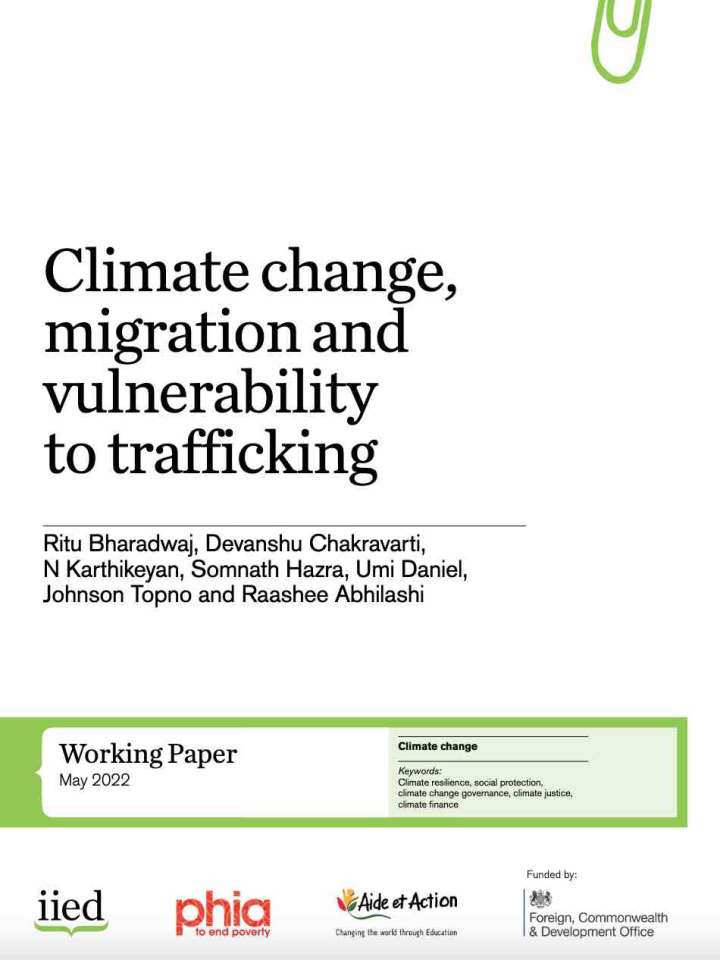Report: Climate change, migration and vulnerability to trafficking
This paper presents empirical evidence on the links between climate change, migration and trafficking. It then unpacks the underlying drivers that policymakers should target to deal with this nexus. The paper explores the extent and impact of climate change on distress migration and human trafficking in two diverse areas affected by slow-onset and rapid-onset climatic events. Climate-related hazards affected close to 20 million people in India in 2020. Climate disasters add to the stress of socioeconomic factors like population density, income inequality and degrading environment.
Together, they increase the risk of loss of life, food insecurity and loss of livelihoods, compelling vulnerable communities to adopt migration as a coping strategy. Climate change and/or climate-induced migration intersects with severe forms of exploitation along at least three pathways: slow-onset disasters (droughts, crop failures), rapid-onset disasters (floods, cyclones) and an amalgamation of conflicts and climate change events. Yet policymakers have rarely considered climate change as a driver of human trafficking.
Explore further

